#S0FIA STANKE DIMITROV RILA MONASTERY
Photo

S0FIA STANKE DIMITROV RILA MONASTERY
S0FIA-STANKE DIMITROV-RILA MONASTERY- BLAGOEVGRAD-SANDANSKI-MELNIK (181 KM)
Starting from the south-western Sofia (part of the E-79 international motorway) — via the Knyazhevo suburb, drive along the Vladaya Gorge. To the left you will see an impressive monument commemorating the Soldiers’ Mutiny at the end of World War I (autumn 1918) when influenced by the October Revolution, soldiers left the front for Sofia to overthrow the monarchy.
The road forks after about 30 km. To the right is the road to Pernik (population 90,000) — a large mining and industrial centre. On the west side of the town rise the high terraces of the local park. Here once stood a medieval fortress of Krakra of Pernik, a Bulgarian feudal ruler from the second half of the 10th century. Hotel Strouma has 26 single rooms, 111 double rooms and 2 suites, restaurant, bar, coffee-shop and hairdressers’ salon. The next town is Stanke Dimitrov (population 43 000) situated on the banks of the Djerman River at the foot of the Rila Mountains. This area was inhabited in ancient times by Thracian tribes. During the Middle Ages several for-tresses stood here, but were destroyed by the Ottoman invaders.
After Bulgaria fell under Ottoman rule, the settlement developed as a centre of crafts and stockbreeding. After Bulgaria’s liberation from Ottoman domination in 1878, tobacco
growing was developed and the town grew rapidly. Doupnitsa, as the town was then called, was the birth place of an outstanding figure in the Bulgarian Communist Party, Stanke Dimitrov (1899-1944), whose name the town bears today.
Stanke Dimitrov
During the years of popular rule, Stanke Dimitrov developed and is now one of the country’s largest tobacco-producing centres.
Points of interest are the local museum, the old clock tower dating from the end of the 17th century and the Stanke Dimitrov Museum Hotel Rila — (two star), has 14 single rooms, 94 double rooms and 2 suites tours sofia, restaurant, bar, coffee- shop, information desk and souvenir stand. There are filling stations and a repair service station.
A road branches off to the right from Stanke Dimitrov and leads to Kyustendil (population 51,000). Kyustendil dates back thousands of years and is one of the oldest towns in Bulgaria. The Roman conquered it in 46 A.D. and developed it further to their own needs. They named the place ‘a town of springs’. Pautalia grew rapidly in the 3rd century A.D. and became a large trading centre. Lying between Macedonia and Serdica (Sofia), Pautalia’s warm mineral springs and its mild, almost Mediterranean climate turned it into an important spa. According to historical data, the Roman Emperor Ulpia Trajan (98-117) suffered from a skin disease which was cured there.
As a token of gratitude to the God of medicine, Ascelius, he named the town Ulpia Pautalia and contributed to its further developmeat In the 11th century, the town was known as Velbuzhd, and in the 15th century, as Konstantinilli, after the ruler of that time, Konstantin Dragash. Eventually it came to be known as Kyustendil and is today a modem town and a major fruit-growing centre. However, Kyustendil is best known for its mineral water whose temperature is as high as 74°C. It is rich in sulphates and hydrogen sulphates and has various curative properties. There is a modem hydropathic medical centre and therapy includes mud treatment, paraffin wraps, etc. The waters are recommended for treatment of chronic inflammation and generative diseases of the joints, diseases of the peripheral nervous system and the spinal cord, chronic gynaecological disorders, stenlity, chronic intoxication from metals such as lead, bismuth and mercury.
0 notes
Photo

S0FIA STANKE DIMITROV RILA MONASTERY
S0FIA-STANKE DIMITROV-RILA MONASTERY- BLAGOEVGRAD-SANDANSKI-MELNIK (181 KM)
Starting from the south-western Sofia (part of the E-79 international motorway) — via the Knyazhevo suburb, drive along the Vladaya Gorge. To the left you will see an impressive monument commemorating the Soldiers’ Mutiny at the end of World War I (autumn 1918) when influenced by the October Revolution, soldiers left the front for Sofia to overthrow the monarchy.
The road forks after about 30 km. To the right is the road to Pernik (population 90,000) — a large mining and industrial centre. On the west side of the town rise the high terraces of the local park. Here once stood a medieval fortress of Krakra of Pernik, a Bulgarian feudal ruler from the second half of the 10th century. Hotel Strouma has 26 single rooms, 111 double rooms and 2 suites, restaurant, bar, coffee-shop and hairdressers’ salon. The next town is Stanke Dimitrov (population 43 000) situated on the banks of the Djerman River at the foot of the Rila Mountains. This area was inhabited in ancient times by Thracian tribes. During the Middle Ages several for-tresses stood here, but were destroyed by the Ottoman invaders.
After Bulgaria fell under Ottoman rule, the settlement developed as a centre of crafts and stockbreeding. After Bulgaria’s liberation from Ottoman domination in 1878, tobacco
growing was developed and the town grew rapidly. Doupnitsa, as the town was then called, was the birth place of an outstanding figure in the Bulgarian Communist Party, Stanke Dimitrov (1899-1944), whose name the town bears today.
Stanke Dimitrov
During the years of popular rule, Stanke Dimitrov developed and is now one of the country’s largest tobacco-producing centres.
Points of interest are the local museum, the old clock tower dating from the end of the 17th century and the Stanke Dimitrov Museum Hotel Rila — (two star), has 14 single rooms, 94 double rooms and 2 suites tours sofia, restaurant, bar, coffee- shop, information desk and souvenir stand. There are filling stations and a repair service station.
A road branches off to the right from Stanke Dimitrov and leads to Kyustendil (population 51,000). Kyustendil dates back thousands of years and is one of the oldest towns in Bulgaria. The Roman conquered it in 46 A.D. and developed it further to their own needs. They named the place ‘a town of springs’. Pautalia grew rapidly in the 3rd century A.D. and became a large trading centre. Lying between Macedonia and Serdica (Sofia), Pautalia’s warm mineral springs and its mild, almost Mediterranean climate turned it into an important spa. According to historical data, the Roman Emperor Ulpia Trajan (98-117) suffered from a skin disease which was cured there.
As a token of gratitude to the God of medicine, Ascelius, he named the town Ulpia Pautalia and contributed to its further developmeat In the 11th century, the town was known as Velbuzhd, and in the 15th century, as Konstantinilli, after the ruler of that time, Konstantin Dragash. Eventually it came to be known as Kyustendil and is today a modem town and a major fruit-growing centre. However, Kyustendil is best known for its mineral water whose temperature is as high as 74°C. It is rich in sulphates and hydrogen sulphates and has various curative properties. There is a modem hydropathic medical centre and therapy includes mud treatment, paraffin wraps, etc. The waters are recommended for treatment of chronic inflammation and generative diseases of the joints, diseases of the peripheral nervous system and the spinal cord, chronic gynaecological disorders, stenlity, chronic intoxication from metals such as lead, bismuth and mercury.
0 notes
Photo
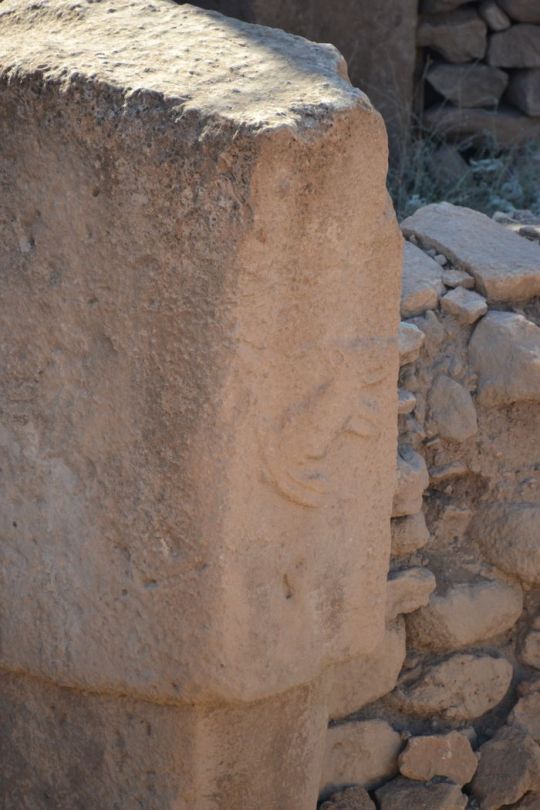
S0FIA STANKE DIMITROV RILA MONASTERY
S0FIA-STANKE DIMITROV-RILA MONASTERY- BLAGOEVGRAD-SANDANSKI-MELNIK (181 KM)
Starting from the south-western Sofia (part of the E-79 international motorway) — via the Knyazhevo suburb, drive along the Vladaya Gorge. To the left you will see an impressive monument commemorating the Soldiers’ Mutiny at the end of World War I (autumn 1918) when influenced by the October Revolution, soldiers left the front for Sofia to overthrow the monarchy.
The road forks after about 30 km. To the right is the road to Pernik (population 90,000) — a large mining and industrial centre. On the west side of the town rise the high terraces of the local park. Here once stood a medieval fortress of Krakra of Pernik, a Bulgarian feudal ruler from the second half of the 10th century. Hotel Strouma has 26 single rooms, 111 double rooms and 2 suites, restaurant, bar, coffee-shop and hairdressers’ salon. The next town is Stanke Dimitrov (population 43 000) situated on the banks of the Djerman River at the foot of the Rila Mountains. This area was inhabited in ancient times by Thracian tribes. During the Middle Ages several for-tresses stood here, but were destroyed by the Ottoman invaders.
After Bulgaria fell under Ottoman rule, the settlement developed as a centre of crafts and stockbreeding. After Bulgaria’s liberation from Ottoman domination in 1878, tobacco
growing was developed and the town grew rapidly. Doupnitsa, as the town was then called, was the birth place of an outstanding figure in the Bulgarian Communist Party, Stanke Dimitrov (1899-1944), whose name the town bears today.
Stanke Dimitrov
During the years of popular rule, Stanke Dimitrov developed and is now one of the country’s largest tobacco-producing centres.
Points of interest are the local museum, the old clock tower dating from the end of the 17th century and the Stanke Dimitrov Museum Hotel Rila — (two star), has 14 single rooms, 94 double rooms and 2 suites tours sofia, restaurant, bar, coffee- shop, information desk and souvenir stand. There are filling stations and a repair service station.
A road branches off to the right from Stanke Dimitrov and leads to Kyustendil (population 51,000). Kyustendil dates back thousands of years and is one of the oldest towns in Bulgaria. The Roman conquered it in 46 A.D. and developed it further to their own needs. They named the place ‘a town of springs’. Pautalia grew rapidly in the 3rd century A.D. and became a large trading centre. Lying between Macedonia and Serdica (Sofia), Pautalia’s warm mineral springs and its mild, almost Mediterranean climate turned it into an important spa. According to historical data, the Roman Emperor Ulpia Trajan (98-117) suffered from a skin disease which was cured there.
As a token of gratitude to the God of medicine, Ascelius, he named the town Ulpia Pautalia and contributed to its further developmeat In the 11th century, the town was known as Velbuzhd, and in the 15th century, as Konstantinilli, after the ruler of that time, Konstantin Dragash. Eventually it came to be known as Kyustendil and is today a modem town and a major fruit-growing centre. However, Kyustendil is best known for its mineral water whose temperature is as high as 74°C. It is rich in sulphates and hydrogen sulphates and has various curative properties. There is a modem hydropathic medical centre and therapy includes mud treatment, paraffin wraps, etc. The waters are recommended for treatment of chronic inflammation and generative diseases of the joints, diseases of the peripheral nervous system and the spinal cord, chronic gynaecological disorders, stenlity, chronic intoxication from metals such as lead, bismuth and mercury.
0 notes
Photo

S0FIA STANKE DIMITROV RILA MONASTERY
S0FIA-STANKE DIMITROV-RILA MONASTERY- BLAGOEVGRAD-SANDANSKI-MELNIK (181 KM)
Starting from the south-western Sofia (part of the E-79 international motorway) — via the Knyazhevo suburb, drive along the Vladaya Gorge. To the left you will see an impressive monument commemorating the Soldiers’ Mutiny at the end of World War I (autumn 1918) when influenced by the October Revolution, soldiers left the front for Sofia to overthrow the monarchy.
The road forks after about 30 km. To the right is the road to Pernik (population 90,000) — a large mining and industrial centre. On the west side of the town rise the high terraces of the local park. Here once stood a medieval fortress of Krakra of Pernik, a Bulgarian feudal ruler from the second half of the 10th century. Hotel Strouma has 26 single rooms, 111 double rooms and 2 suites, restaurant, bar, coffee-shop and hairdressers’ salon. The next town is Stanke Dimitrov (population 43 000) situated on the banks of the Djerman River at the foot of the Rila Mountains. This area was inhabited in ancient times by Thracian tribes. During the Middle Ages several for-tresses stood here, but were destroyed by the Ottoman invaders.
After Bulgaria fell under Ottoman rule, the settlement developed as a centre of crafts and stockbreeding. After Bulgaria’s liberation from Ottoman domination in 1878, tobacco
growing was developed and the town grew rapidly. Doupnitsa, as the town was then called, was the birth place of an outstanding figure in the Bulgarian Communist Party, Stanke Dimitrov (1899-1944), whose name the town bears today.
Stanke Dimitrov
During the years of popular rule, Stanke Dimitrov developed and is now one of the country’s largest tobacco-producing centres.
Points of interest are the local museum, the old clock tower dating from the end of the 17th century and the Stanke Dimitrov Museum Hotel Rila — (two star), has 14 single rooms, 94 double rooms and 2 suites tours sofia, restaurant, bar, coffee- shop, information desk and souvenir stand. There are filling stations and a repair service station.
A road branches off to the right from Stanke Dimitrov and leads to Kyustendil (population 51,000). Kyustendil dates back thousands of years and is one of the oldest towns in Bulgaria. The Roman conquered it in 46 A.D. and developed it further to their own needs. They named the place ‘a town of springs’. Pautalia grew rapidly in the 3rd century A.D. and became a large trading centre. Lying between Macedonia and Serdica (Sofia), Pautalia’s warm mineral springs and its mild, almost Mediterranean climate turned it into an important spa. According to historical data, the Roman Emperor Ulpia Trajan (98-117) suffered from a skin disease which was cured there.
As a token of gratitude to the God of medicine, Ascelius, he named the town Ulpia Pautalia and contributed to its further developmeat In the 11th century, the town was known as Velbuzhd, and in the 15th century, as Konstantinilli, after the ruler of that time, Konstantin Dragash. Eventually it came to be known as Kyustendil and is today a modem town and a major fruit-growing centre. However, Kyustendil is best known for its mineral water whose temperature is as high as 74°C. It is rich in sulphates and hydrogen sulphates and has various curative properties. There is a modem hydropathic medical centre and therapy includes mud treatment, paraffin wraps, etc. The waters are recommended for treatment of chronic inflammation and generative diseases of the joints, diseases of the peripheral nervous system and the spinal cord, chronic gynaecological disorders, stenlity, chronic intoxication from metals such as lead, bismuth and mercury.
0 notes
Photo
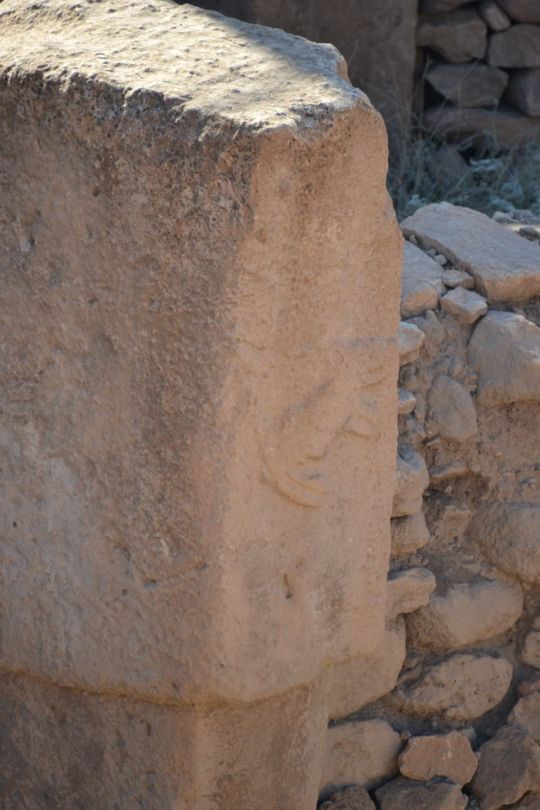
S0FIA STANKE DIMITROV RILA MONASTERY
S0FIA-STANKE DIMITROV-RILA MONASTERY- BLAGOEVGRAD-SANDANSKI-MELNIK (181 KM)
Starting from the south-western Sofia (part of the E-79 international motorway) — via the Knyazhevo suburb, drive along the Vladaya Gorge. To the left you will see an impressive monument commemorating the Soldiers’ Mutiny at the end of World War I (autumn 1918) when influenced by the October Revolution, soldiers left the front for Sofia to overthrow the monarchy.
The road forks after about 30 km. To the right is the road to Pernik (population 90,000) — a large mining and industrial centre. On the west side of the town rise the high terraces of the local park. Here once stood a medieval fortress of Krakra of Pernik, a Bulgarian feudal ruler from the second half of the 10th century. Hotel Strouma has 26 single rooms, 111 double rooms and 2 suites, restaurant, bar, coffee-shop and hairdressers’ salon. The next town is Stanke Dimitrov (population 43 000) situated on the banks of the Djerman River at the foot of the Rila Mountains. This area was inhabited in ancient times by Thracian tribes. During the Middle Ages several for-tresses stood here, but were destroyed by the Ottoman invaders.
After Bulgaria fell under Ottoman rule, the settlement developed as a centre of crafts and stockbreeding. After Bulgaria’s liberation from Ottoman domination in 1878, tobacco
growing was developed and the town grew rapidly. Doupnitsa, as the town was then called, was the birth place of an outstanding figure in the Bulgarian Communist Party, Stanke Dimitrov (1899-1944), whose name the town bears today.
Stanke Dimitrov
During the years of popular rule, Stanke Dimitrov developed and is now one of the country’s largest tobacco-producing centres.
Points of interest are the local museum, the old clock tower dating from the end of the 17th century and the Stanke Dimitrov Museum Hotel Rila — (two star), has 14 single rooms, 94 double rooms and 2 suites tours sofia, restaurant, bar, coffee- shop, information desk and souvenir stand. There are filling stations and a repair service station.
A road branches off to the right from Stanke Dimitrov and leads to Kyustendil (population 51,000). Kyustendil dates back thousands of years and is one of the oldest towns in Bulgaria. The Roman conquered it in 46 A.D. and developed it further to their own needs. They named the place ‘a town of springs’. Pautalia grew rapidly in the 3rd century A.D. and became a large trading centre. Lying between Macedonia and Serdica (Sofia), Pautalia’s warm mineral springs and its mild, almost Mediterranean climate turned it into an important spa. According to historical data, the Roman Emperor Ulpia Trajan (98-117) suffered from a skin disease which was cured there.
As a token of gratitude to the God of medicine, Ascelius, he named the town Ulpia Pautalia and contributed to its further developmeat In the 11th century, the town was known as Velbuzhd, and in the 15th century, as Konstantinilli, after the ruler of that time, Konstantin Dragash. Eventually it came to be known as Kyustendil and is today a modem town and a major fruit-growing centre. However, Kyustendil is best known for its mineral water whose temperature is as high as 74°C. It is rich in sulphates and hydrogen sulphates and has various curative properties. There is a modem hydropathic medical centre and therapy includes mud treatment, paraffin wraps, etc. The waters are recommended for treatment of chronic inflammation and generative diseases of the joints, diseases of the peripheral nervous system and the spinal cord, chronic gynaecological disorders, stenlity, chronic intoxication from metals such as lead, bismuth and mercury.
0 notes
Photo
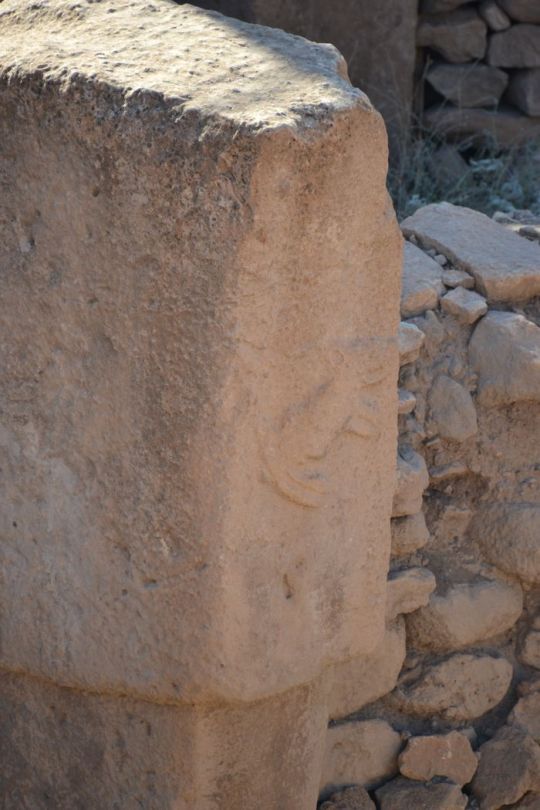
S0FIA STANKE DIMITROV RILA MONASTERY
S0FIA-STANKE DIMITROV-RILA MONASTERY- BLAGOEVGRAD-SANDANSKI-MELNIK (181 KM)
Starting from the south-western Sofia (part of the E-79 international motorway) — via the Knyazhevo suburb, drive along the Vladaya Gorge. To the left you will see an impressive monument commemorating the Soldiers’ Mutiny at the end of World War I (autumn 1918) when influenced by the October Revolution, soldiers left the front for Sofia to overthrow the monarchy.
The road forks after about 30 km. To the right is the road to Pernik (population 90,000) — a large mining and industrial centre. On the west side of the town rise the high terraces of the local park. Here once stood a medieval fortress of Krakra of Pernik, a Bulgarian feudal ruler from the second half of the 10th century. Hotel Strouma has 26 single rooms, 111 double rooms and 2 suites, restaurant, bar, coffee-shop and hairdressers’ salon. The next town is Stanke Dimitrov (population 43 000) situated on the banks of the Djerman River at the foot of the Rila Mountains. This area was inhabited in ancient times by Thracian tribes. During the Middle Ages several for-tresses stood here, but were destroyed by the Ottoman invaders.
After Bulgaria fell under Ottoman rule, the settlement developed as a centre of crafts and stockbreeding. After Bulgaria’s liberation from Ottoman domination in 1878, tobacco
growing was developed and the town grew rapidly. Doupnitsa, as the town was then called, was the birth place of an outstanding figure in the Bulgarian Communist Party, Stanke Dimitrov (1899-1944), whose name the town bears today.
Stanke Dimitrov
During the years of popular rule, Stanke Dimitrov developed and is now one of the country’s largest tobacco-producing centres.
Points of interest are the local museum, the old clock tower dating from the end of the 17th century and the Stanke Dimitrov Museum Hotel Rila — (two star), has 14 single rooms, 94 double rooms and 2 suites tours sofia, restaurant, bar, coffee- shop, information desk and souvenir stand. There are filling stations and a repair service station.
A road branches off to the right from Stanke Dimitrov and leads to Kyustendil (population 51,000). Kyustendil dates back thousands of years and is one of the oldest towns in Bulgaria. The Roman conquered it in 46 A.D. and developed it further to their own needs. They named the place ‘a town of springs’. Pautalia grew rapidly in the 3rd century A.D. and became a large trading centre. Lying between Macedonia and Serdica (Sofia), Pautalia’s warm mineral springs and its mild, almost Mediterranean climate turned it into an important spa. According to historical data, the Roman Emperor Ulpia Trajan (98-117) suffered from a skin disease which was cured there.
As a token of gratitude to the God of medicine, Ascelius, he named the town Ulpia Pautalia and contributed to its further developmeat In the 11th century, the town was known as Velbuzhd, and in the 15th century, as Konstantinilli, after the ruler of that time, Konstantin Dragash. Eventually it came to be known as Kyustendil and is today a modem town and a major fruit-growing centre. However, Kyustendil is best known for its mineral water whose temperature is as high as 74°C. It is rich in sulphates and hydrogen sulphates and has various curative properties. There is a modem hydropathic medical centre and therapy includes mud treatment, paraffin wraps, etc. The waters are recommended for treatment of chronic inflammation and generative diseases of the joints, diseases of the peripheral nervous system and the spinal cord, chronic gynaecological disorders, stenlity, chronic intoxication from metals such as lead, bismuth and mercury.
0 notes
Photo
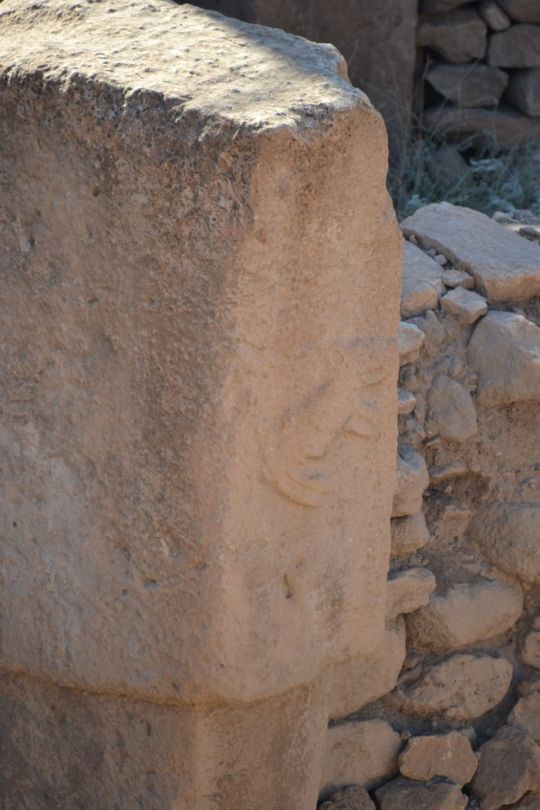
S0FIA STANKE DIMITROV RILA MONASTERY
S0FIA-STANKE DIMITROV-RILA MONASTERY- BLAGOEVGRAD-SANDANSKI-MELNIK (181 KM)
Starting from the south-western Sofia (part of the E-79 international motorway) — via the Knyazhevo suburb, drive along the Vladaya Gorge. To the left you will see an impressive monument commemorating the Soldiers’ Mutiny at the end of World War I (autumn 1918) when influenced by the October Revolution, soldiers left the front for Sofia to overthrow the monarchy.
The road forks after about 30 km. To the right is the road to Pernik (population 90,000) — a large mining and industrial centre. On the west side of the town rise the high terraces of the local park. Here once stood a medieval fortress of Krakra of Pernik, a Bulgarian feudal ruler from the second half of the 10th century. Hotel Strouma has 26 single rooms, 111 double rooms and 2 suites, restaurant, bar, coffee-shop and hairdressers’ salon. The next town is Stanke Dimitrov (population 43 000) situated on the banks of the Djerman River at the foot of the Rila Mountains. This area was inhabited in ancient times by Thracian tribes. During the Middle Ages several for-tresses stood here, but were destroyed by the Ottoman invaders.
After Bulgaria fell under Ottoman rule, the settlement developed as a centre of crafts and stockbreeding. After Bulgaria’s liberation from Ottoman domination in 1878, tobacco
growing was developed and the town grew rapidly. Doupnitsa, as the town was then called, was the birth place of an outstanding figure in the Bulgarian Communist Party, Stanke Dimitrov (1899-1944), whose name the town bears today.
Stanke Dimitrov
During the years of popular rule, Stanke Dimitrov developed and is now one of the country’s largest tobacco-producing centres.
Points of interest are the local museum, the old clock tower dating from the end of the 17th century and the Stanke Dimitrov Museum Hotel Rila — (two star), has 14 single rooms, 94 double rooms and 2 suites tours sofia, restaurant, bar, coffee- shop, information desk and souvenir stand. There are filling stations and a repair service station.
A road branches off to the right from Stanke Dimitrov and leads to Kyustendil (population 51,000). Kyustendil dates back thousands of years and is one of the oldest towns in Bulgaria. The Roman conquered it in 46 A.D. and developed it further to their own needs. They named the place ‘a town of springs’. Pautalia grew rapidly in the 3rd century A.D. and became a large trading centre. Lying between Macedonia and Serdica (Sofia), Pautalia’s warm mineral springs and its mild, almost Mediterranean climate turned it into an important spa. According to historical data, the Roman Emperor Ulpia Trajan (98-117) suffered from a skin disease which was cured there.
As a token of gratitude to the God of medicine, Ascelius, he named the town Ulpia Pautalia and contributed to its further developmeat In the 11th century, the town was known as Velbuzhd, and in the 15th century, as Konstantinilli, after the ruler of that time, Konstantin Dragash. Eventually it came to be known as Kyustendil and is today a modem town and a major fruit-growing centre. However, Kyustendil is best known for its mineral water whose temperature is as high as 74°C. It is rich in sulphates and hydrogen sulphates and has various curative properties. There is a modem hydropathic medical centre and therapy includes mud treatment, paraffin wraps, etc. The waters are recommended for treatment of chronic inflammation and generative diseases of the joints, diseases of the peripheral nervous system and the spinal cord, chronic gynaecological disorders, stenlity, chronic intoxication from metals such as lead, bismuth and mercury.
0 notes
Photo
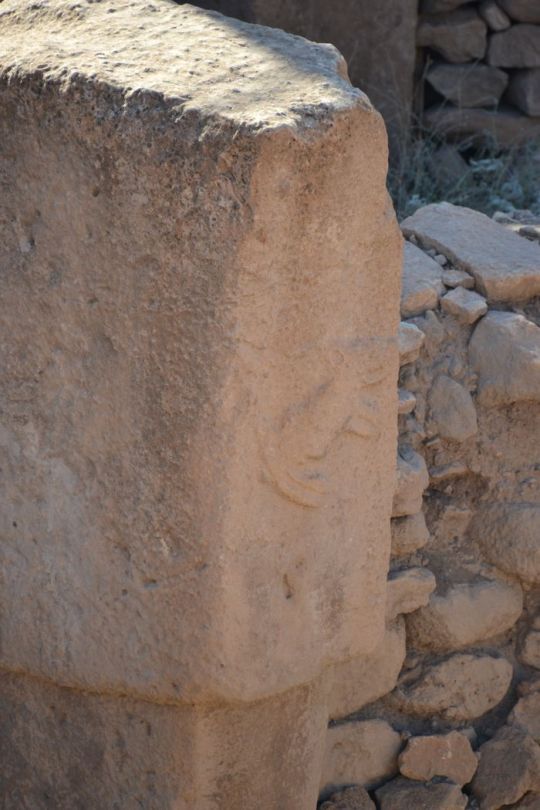
S0FIA STANKE DIMITROV RILA MONASTERY
S0FIA-STANKE DIMITROV-RILA MONASTERY- BLAGOEVGRAD-SANDANSKI-MELNIK (181 KM)
Starting from the south-western Sofia (part of the E-79 international motorway) — via the Knyazhevo suburb, drive along the Vladaya Gorge. To the left you will see an impressive monument commemorating the Soldiers’ Mutiny at the end of World War I (autumn 1918) when influenced by the October Revolution, soldiers left the front for Sofia to overthrow the monarchy.
The road forks after about 30 km. To the right is the road to Pernik (population 90,000) — a large mining and industrial centre. On the west side of the town rise the high terraces of the local park. Here once stood a medieval fortress of Krakra of Pernik, a Bulgarian feudal ruler from the second half of the 10th century. Hotel Strouma has 26 single rooms, 111 double rooms and 2 suites, restaurant, bar, coffee-shop and hairdressers’ salon. The next town is Stanke Dimitrov (population 43 000) situated on the banks of the Djerman River at the foot of the Rila Mountains. This area was inhabited in ancient times by Thracian tribes. During the Middle Ages several for-tresses stood here, but were destroyed by the Ottoman invaders.
After Bulgaria fell under Ottoman rule, the settlement developed as a centre of crafts and stockbreeding. After Bulgaria’s liberation from Ottoman domination in 1878, tobacco
growing was developed and the town grew rapidly. Doupnitsa, as the town was then called, was the birth place of an outstanding figure in the Bulgarian Communist Party, Stanke Dimitrov (1899-1944), whose name the town bears today.
Stanke Dimitrov
During the years of popular rule, Stanke Dimitrov developed and is now one of the country’s largest tobacco-producing centres.
Points of interest are the local museum, the old clock tower dating from the end of the 17th century and the Stanke Dimitrov Museum Hotel Rila — (two star), has 14 single rooms, 94 double rooms and 2 suites tours sofia, restaurant, bar, coffee- shop, information desk and souvenir stand. There are filling stations and a repair service station.
A road branches off to the right from Stanke Dimitrov and leads to Kyustendil (population 51,000). Kyustendil dates back thousands of years and is one of the oldest towns in Bulgaria. The Roman conquered it in 46 A.D. and developed it further to their own needs. They named the place ‘a town of springs’. Pautalia grew rapidly in the 3rd century A.D. and became a large trading centre. Lying between Macedonia and Serdica (Sofia), Pautalia’s warm mineral springs and its mild, almost Mediterranean climate turned it into an important spa. According to historical data, the Roman Emperor Ulpia Trajan (98-117) suffered from a skin disease which was cured there.
As a token of gratitude to the God of medicine, Ascelius, he named the town Ulpia Pautalia and contributed to its further developmeat In the 11th century, the town was known as Velbuzhd, and in the 15th century, as Konstantinilli, after the ruler of that time, Konstantin Dragash. Eventually it came to be known as Kyustendil and is today a modem town and a major fruit-growing centre. However, Kyustendil is best known for its mineral water whose temperature is as high as 74°C. It is rich in sulphates and hydrogen sulphates and has various curative properties. There is a modem hydropathic medical centre and therapy includes mud treatment, paraffin wraps, etc. The waters are recommended for treatment of chronic inflammation and generative diseases of the joints, diseases of the peripheral nervous system and the spinal cord, chronic gynaecological disorders, stenlity, chronic intoxication from metals such as lead, bismuth and mercury.
0 notes
Photo
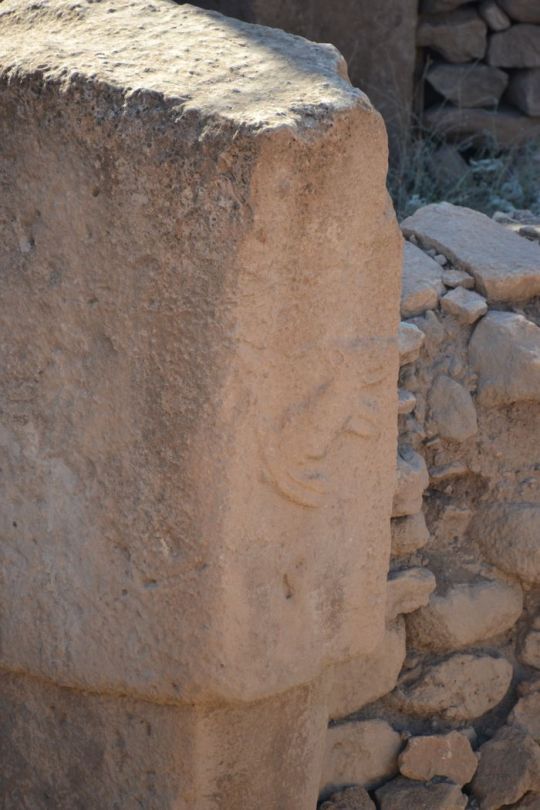
S0FIA STANKE DIMITROV RILA MONASTERY
S0FIA-STANKE DIMITROV-RILA MONASTERY- BLAGOEVGRAD-SANDANSKI-MELNIK (181 KM)
Starting from the south-western Sofia (part of the E-79 international motorway) — via the Knyazhevo suburb, drive along the Vladaya Gorge. To the left you will see an impressive monument commemorating the Soldiers’ Mutiny at the end of World War I (autumn 1918) when influenced by the October Revolution, soldiers left the front for Sofia to overthrow the monarchy.
The road forks after about 30 km. To the right is the road to Pernik (population 90,000) — a large mining and industrial centre. On the west side of the town rise the high terraces of the local park. Here once stood a medieval fortress of Krakra of Pernik, a Bulgarian feudal ruler from the second half of the 10th century. Hotel Strouma has 26 single rooms, 111 double rooms and 2 suites, restaurant, bar, coffee-shop and hairdressers’ salon. The next town is Stanke Dimitrov (population 43 000) situated on the banks of the Djerman River at the foot of the Rila Mountains. This area was inhabited in ancient times by Thracian tribes. During the Middle Ages several for-tresses stood here, but were destroyed by the Ottoman invaders.
After Bulgaria fell under Ottoman rule, the settlement developed as a centre of crafts and stockbreeding. After Bulgaria’s liberation from Ottoman domination in 1878, tobacco
growing was developed and the town grew rapidly. Doupnitsa, as the town was then called, was the birth place of an outstanding figure in the Bulgarian Communist Party, Stanke Dimitrov (1899-1944), whose name the town bears today.
Stanke Dimitrov
During the years of popular rule, Stanke Dimitrov developed and is now one of the country’s largest tobacco-producing centres.
Points of interest are the local museum, the old clock tower dating from the end of the 17th century and the Stanke Dimitrov Museum Hotel Rila — (two star), has 14 single rooms, 94 double rooms and 2 suites tours sofia, restaurant, bar, coffee- shop, information desk and souvenir stand. There are filling stations and a repair service station.
A road branches off to the right from Stanke Dimitrov and leads to Kyustendil (population 51,000). Kyustendil dates back thousands of years and is one of the oldest towns in Bulgaria. The Roman conquered it in 46 A.D. and developed it further to their own needs. They named the place ‘a town of springs’. Pautalia grew rapidly in the 3rd century A.D. and became a large trading centre. Lying between Macedonia and Serdica (Sofia), Pautalia’s warm mineral springs and its mild, almost Mediterranean climate turned it into an important spa. According to historical data, the Roman Emperor Ulpia Trajan (98-117) suffered from a skin disease which was cured there.
As a token of gratitude to the God of medicine, Ascelius, he named the town Ulpia Pautalia and contributed to its further developmeat In the 11th century, the town was known as Velbuzhd, and in the 15th century, as Konstantinilli, after the ruler of that time, Konstantin Dragash. Eventually it came to be known as Kyustendil and is today a modem town and a major fruit-growing centre. However, Kyustendil is best known for its mineral water whose temperature is as high as 74°C. It is rich in sulphates and hydrogen sulphates and has various curative properties. There is a modem hydropathic medical centre and therapy includes mud treatment, paraffin wraps, etc. The waters are recommended for treatment of chronic inflammation and generative diseases of the joints, diseases of the peripheral nervous system and the spinal cord, chronic gynaecological disorders, stenlity, chronic intoxication from metals such as lead, bismuth and mercury.
0 notes
Photo

S0FIA STANKE DIMITROV RILA MONASTERY
S0FIA-STANKE DIMITROV-RILA MONASTERY- BLAGOEVGRAD-SANDANSKI-MELNIK (181 KM)
Starting from the south-western Sofia (part of the E-79 international motorway) — via the Knyazhevo suburb, drive along the Vladaya Gorge. To the left you will see an impressive monument commemorating the Soldiers’ Mutiny at the end of World War I (autumn 1918) when influenced by the October Revolution, soldiers left the front for Sofia to overthrow the monarchy.
The road forks after about 30 km. To the right is the road to Pernik (population 90,000) — a large mining and industrial centre. On the west side of the town rise the high terraces of the local park. Here once stood a medieval fortress of Krakra of Pernik, a Bulgarian feudal ruler from the second half of the 10th century. Hotel Strouma has 26 single rooms, 111 double rooms and 2 suites, restaurant, bar, coffee-shop and hairdressers’ salon. The next town is Stanke Dimitrov (population 43 000) situated on the banks of the Djerman River at the foot of the Rila Mountains. This area was inhabited in ancient times by Thracian tribes. During the Middle Ages several for-tresses stood here, but were destroyed by the Ottoman invaders.
After Bulgaria fell under Ottoman rule, the settlement developed as a centre of crafts and stockbreeding. After Bulgaria’s liberation from Ottoman domination in 1878, tobacco
growing was developed and the town grew rapidly. Doupnitsa, as the town was then called, was the birth place of an outstanding figure in the Bulgarian Communist Party, Stanke Dimitrov (1899-1944), whose name the town bears today.
Stanke Dimitrov
During the years of popular rule, Stanke Dimitrov developed and is now one of the country’s largest tobacco-producing centres.
Points of interest are the local museum, the old clock tower dating from the end of the 17th century and the Stanke Dimitrov Museum Hotel Rila — (two star), has 14 single rooms, 94 double rooms and 2 suites tours sofia, restaurant, bar, coffee- shop, information desk and souvenir stand. There are filling stations and a repair service station.
A road branches off to the right from Stanke Dimitrov and leads to Kyustendil (population 51,000). Kyustendil dates back thousands of years and is one of the oldest towns in Bulgaria. The Roman conquered it in 46 A.D. and developed it further to their own needs. They named the place ‘a town of springs’. Pautalia grew rapidly in the 3rd century A.D. and became a large trading centre. Lying between Macedonia and Serdica (Sofia), Pautalia’s warm mineral springs and its mild, almost Mediterranean climate turned it into an important spa. According to historical data, the Roman Emperor Ulpia Trajan (98-117) suffered from a skin disease which was cured there.
As a token of gratitude to the God of medicine, Ascelius, he named the town Ulpia Pautalia and contributed to its further developmeat In the 11th century, the town was known as Velbuzhd, and in the 15th century, as Konstantinilli, after the ruler of that time, Konstantin Dragash. Eventually it came to be known as Kyustendil and is today a modem town and a major fruit-growing centre. However, Kyustendil is best known for its mineral water whose temperature is as high as 74°C. It is rich in sulphates and hydrogen sulphates and has various curative properties. There is a modem hydropathic medical centre and therapy includes mud treatment, paraffin wraps, etc. The waters are recommended for treatment of chronic inflammation and generative diseases of the joints, diseases of the peripheral nervous system and the spinal cord, chronic gynaecological disorders, stenlity, chronic intoxication from metals such as lead, bismuth and mercury.
0 notes
Photo

S0FIA STANKE DIMITROV RILA MONASTERY
S0FIA-STANKE DIMITROV-RILA MONASTERY- BLAGOEVGRAD-SANDANSKI-MELNIK (181 KM)
Starting from the south-western Sofia (part of the E-79 international motorway) — via the Knyazhevo suburb, drive along the Vladaya Gorge. To the left you will see an impressive monument commemorating the Soldiers’ Mutiny at the end of World War I (autumn 1918) when influenced by the October Revolution, soldiers left the front for Sofia to overthrow the monarchy.
The road forks after about 30 km. To the right is the road to Pernik (population 90,000) — a large mining and industrial centre. On the west side of the town rise the high terraces of the local park. Here once stood a medieval fortress of Krakra of Pernik, a Bulgarian feudal ruler from the second half of the 10th century. Hotel Strouma has 26 single rooms, 111 double rooms and 2 suites, restaurant, bar, coffee-shop and hairdressers’ salon. The next town is Stanke Dimitrov (population 43 000) situated on the banks of the Djerman River at the foot of the Rila Mountains. This area was inhabited in ancient times by Thracian tribes. During the Middle Ages several for-tresses stood here, but were destroyed by the Ottoman invaders.
After Bulgaria fell under Ottoman rule, the settlement developed as a centre of crafts and stockbreeding. After Bulgaria’s liberation from Ottoman domination in 1878, tobacco
growing was developed and the town grew rapidly. Doupnitsa, as the town was then called, was the birth place of an outstanding figure in the Bulgarian Communist Party, Stanke Dimitrov (1899-1944), whose name the town bears today.
Stanke Dimitrov
During the years of popular rule, Stanke Dimitrov developed and is now one of the country’s largest tobacco-producing centres.
Points of interest are the local museum, the old clock tower dating from the end of the 17th century and the Stanke Dimitrov Museum Hotel Rila — (two star), has 14 single rooms, 94 double rooms and 2 suites tours sofia, restaurant, bar, coffee- shop, information desk and souvenir stand. There are filling stations and a repair service station.
A road branches off to the right from Stanke Dimitrov and leads to Kyustendil (population 51,000). Kyustendil dates back thousands of years and is one of the oldest towns in Bulgaria. The Roman conquered it in 46 A.D. and developed it further to their own needs. They named the place ‘a town of springs’. Pautalia grew rapidly in the 3rd century A.D. and became a large trading centre. Lying between Macedonia and Serdica (Sofia), Pautalia’s warm mineral springs and its mild, almost Mediterranean climate turned it into an important spa. According to historical data, the Roman Emperor Ulpia Trajan (98-117) suffered from a skin disease which was cured there.
As a token of gratitude to the God of medicine, Ascelius, he named the town Ulpia Pautalia and contributed to its further developmeat In the 11th century, the town was known as Velbuzhd, and in the 15th century, as Konstantinilli, after the ruler of that time, Konstantin Dragash. Eventually it came to be known as Kyustendil and is today a modem town and a major fruit-growing centre. However, Kyustendil is best known for its mineral water whose temperature is as high as 74°C. It is rich in sulphates and hydrogen sulphates and has various curative properties. There is a modem hydropathic medical centre and therapy includes mud treatment, paraffin wraps, etc. The waters are recommended for treatment of chronic inflammation and generative diseases of the joints, diseases of the peripheral nervous system and the spinal cord, chronic gynaecological disorders, stenlity, chronic intoxication from metals such as lead, bismuth and mercury.
0 notes
Photo
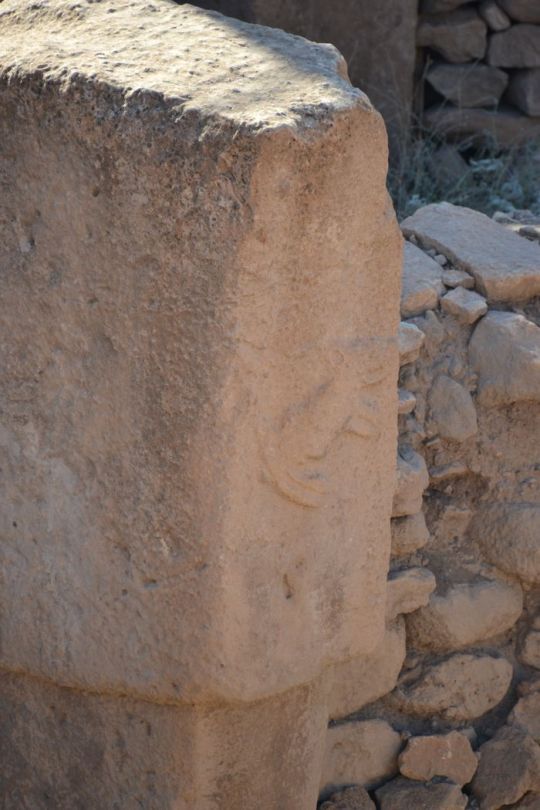
S0FIA STANKE DIMITROV RILA MONASTERY
S0FIA-STANKE DIMITROV-RILA MONASTERY- BLAGOEVGRAD-SANDANSKI-MELNIK (181 KM)
Starting from the south-western Sofia (part of the E-79 international motorway) — via the Knyazhevo suburb, drive along the Vladaya Gorge. To the left you will see an impressive monument commemorating the Soldiers’ Mutiny at the end of World War I (autumn 1918) when influenced by the October Revolution, soldiers left the front for Sofia to overthrow the monarchy.
The road forks after about 30 km. To the right is the road to Pernik (population 90,000) — a large mining and industrial centre. On the west side of the town rise the high terraces of the local park. Here once stood a medieval fortress of Krakra of Pernik, a Bulgarian feudal ruler from the second half of the 10th century. Hotel Strouma has 26 single rooms, 111 double rooms and 2 suites, restaurant, bar, coffee-shop and hairdressers’ salon. The next town is Stanke Dimitrov (population 43 000) situated on the banks of the Djerman River at the foot of the Rila Mountains. This area was inhabited in ancient times by Thracian tribes. During the Middle Ages several for-tresses stood here, but were destroyed by the Ottoman invaders.
After Bulgaria fell under Ottoman rule, the settlement developed as a centre of crafts and stockbreeding. After Bulgaria’s liberation from Ottoman domination in 1878, tobacco
growing was developed and the town grew rapidly. Doupnitsa, as the town was then called, was the birth place of an outstanding figure in the Bulgarian Communist Party, Stanke Dimitrov (1899-1944), whose name the town bears today.
Stanke Dimitrov
During the years of popular rule, Stanke Dimitrov developed and is now one of the country’s largest tobacco-producing centres.
Points of interest are the local museum, the old clock tower dating from the end of the 17th century and the Stanke Dimitrov Museum Hotel Rila — (two star), has 14 single rooms, 94 double rooms and 2 suites tours sofia, restaurant, bar, coffee- shop, information desk and souvenir stand. There are filling stations and a repair service station.
A road branches off to the right from Stanke Dimitrov and leads to Kyustendil (population 51,000). Kyustendil dates back thousands of years and is one of the oldest towns in Bulgaria. The Roman conquered it in 46 A.D. and developed it further to their own needs. They named the place ‘a town of springs’. Pautalia grew rapidly in the 3rd century A.D. and became a large trading centre. Lying between Macedonia and Serdica (Sofia), Pautalia’s warm mineral springs and its mild, almost Mediterranean climate turned it into an important spa. According to historical data, the Roman Emperor Ulpia Trajan (98-117) suffered from a skin disease which was cured there.
As a token of gratitude to the God of medicine, Ascelius, he named the town Ulpia Pautalia and contributed to its further developmeat In the 11th century, the town was known as Velbuzhd, and in the 15th century, as Konstantinilli, after the ruler of that time, Konstantin Dragash. Eventually it came to be known as Kyustendil and is today a modem town and a major fruit-growing centre. However, Kyustendil is best known for its mineral water whose temperature is as high as 74°C. It is rich in sulphates and hydrogen sulphates and has various curative properties. There is a modem hydropathic medical centre and therapy includes mud treatment, paraffin wraps, etc. The waters are recommended for treatment of chronic inflammation and generative diseases of the joints, diseases of the peripheral nervous system and the spinal cord, chronic gynaecological disorders, stenlity, chronic intoxication from metals such as lead, bismuth and mercury.
0 notes
Photo
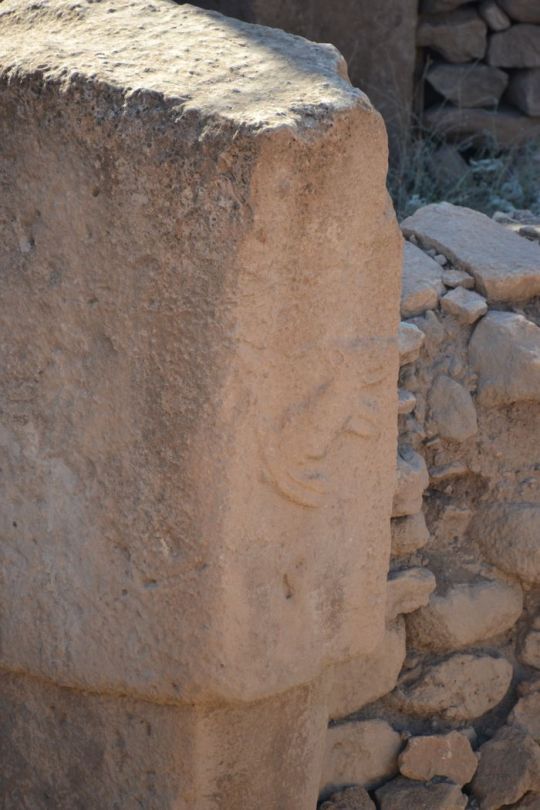
S0FIA STANKE DIMITROV RILA MONASTERY
S0FIA-STANKE DIMITROV-RILA MONASTERY- BLAGOEVGRAD-SANDANSKI-MELNIK (181 KM)
Starting from the south-western Sofia (part of the E-79 international motorway) — via the Knyazhevo suburb, drive along the Vladaya Gorge. To the left you will see an impressive monument commemorating the Soldiers’ Mutiny at the end of World War I (autumn 1918) when influenced by the October Revolution, soldiers left the front for Sofia to overthrow the monarchy.
The road forks after about 30 km. To the right is the road to Pernik (population 90,000) — a large mining and industrial centre. On the west side of the town rise the high terraces of the local park. Here once stood a medieval fortress of Krakra of Pernik, a Bulgarian feudal ruler from the second half of the 10th century. Hotel Strouma has 26 single rooms, 111 double rooms and 2 suites, restaurant, bar, coffee-shop and hairdressers’ salon. The next town is Stanke Dimitrov (population 43 000) situated on the banks of the Djerman River at the foot of the Rila Mountains. This area was inhabited in ancient times by Thracian tribes. During the Middle Ages several for-tresses stood here, but were destroyed by the Ottoman invaders.
After Bulgaria fell under Ottoman rule, the settlement developed as a centre of crafts and stockbreeding. After Bulgaria’s liberation from Ottoman domination in 1878, tobacco
growing was developed and the town grew rapidly. Doupnitsa, as the town was then called, was the birth place of an outstanding figure in the Bulgarian Communist Party, Stanke Dimitrov (1899-1944), whose name the town bears today.
Stanke Dimitrov
During the years of popular rule, Stanke Dimitrov developed and is now one of the country’s largest tobacco-producing centres.
Points of interest are the local museum, the old clock tower dating from the end of the 17th century and the Stanke Dimitrov Museum Hotel Rila — (two star), has 14 single rooms, 94 double rooms and 2 suites tours sofia, restaurant, bar, coffee- shop, information desk and souvenir stand. There are filling stations and a repair service station.
A road branches off to the right from Stanke Dimitrov and leads to Kyustendil (population 51,000). Kyustendil dates back thousands of years and is one of the oldest towns in Bulgaria. The Roman conquered it in 46 A.D. and developed it further to their own needs. They named the place ‘a town of springs’. Pautalia grew rapidly in the 3rd century A.D. and became a large trading centre. Lying between Macedonia and Serdica (Sofia), Pautalia’s warm mineral springs and its mild, almost Mediterranean climate turned it into an important spa. According to historical data, the Roman Emperor Ulpia Trajan (98-117) suffered from a skin disease which was cured there.
As a token of gratitude to the God of medicine, Ascelius, he named the town Ulpia Pautalia and contributed to its further developmeat In the 11th century, the town was known as Velbuzhd, and in the 15th century, as Konstantinilli, after the ruler of that time, Konstantin Dragash. Eventually it came to be known as Kyustendil and is today a modem town and a major fruit-growing centre. However, Kyustendil is best known for its mineral water whose temperature is as high as 74°C. It is rich in sulphates and hydrogen sulphates and has various curative properties. There is a modem hydropathic medical centre and therapy includes mud treatment, paraffin wraps, etc. The waters are recommended for treatment of chronic inflammation and generative diseases of the joints, diseases of the peripheral nervous system and the spinal cord, chronic gynaecological disorders, stenlity, chronic intoxication from metals such as lead, bismuth and mercury.
0 notes
Photo
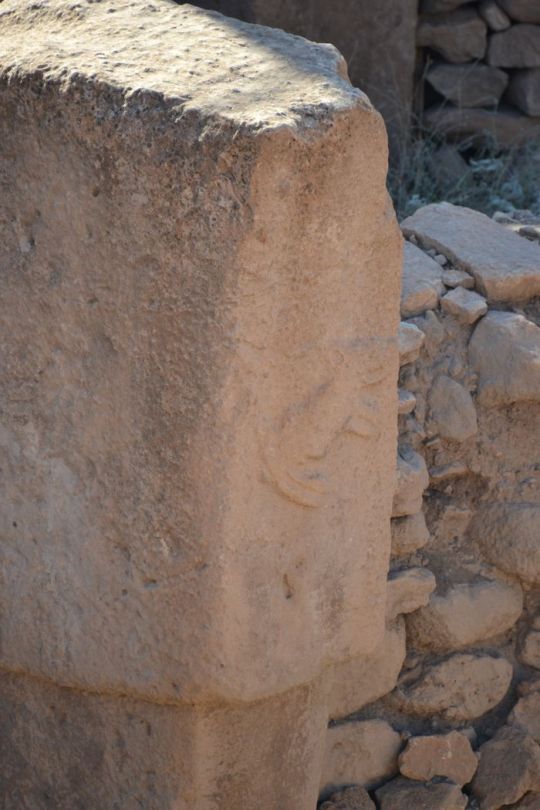
S0FIA STANKE DIMITROV RILA MONASTERY
S0FIA-STANKE DIMITROV-RILA MONASTERY- BLAGOEVGRAD-SANDANSKI-MELNIK (181 KM)
Starting from the south-western Sofia (part of the E-79 international motorway) — via the Knyazhevo suburb, drive along the Vladaya Gorge. To the left you will see an impressive monument commemorating the Soldiers’ Mutiny at the end of World War I (autumn 1918) when influenced by the October Revolution, soldiers left the front for Sofia to overthrow the monarchy.
The road forks after about 30 km. To the right is the road to Pernik (population 90,000) — a large mining and industrial centre. On the west side of the town rise the high terraces of the local park. Here once stood a medieval fortress of Krakra of Pernik, a Bulgarian feudal ruler from the second half of the 10th century. Hotel Strouma has 26 single rooms, 111 double rooms and 2 suites, restaurant, bar, coffee-shop and hairdressers’ salon. The next town is Stanke Dimitrov (population 43 000) situated on the banks of the Djerman River at the foot of the Rila Mountains. This area was inhabited in ancient times by Thracian tribes. During the Middle Ages several for-tresses stood here, but were destroyed by the Ottoman invaders.
After Bulgaria fell under Ottoman rule, the settlement developed as a centre of crafts and stockbreeding. After Bulgaria’s liberation from Ottoman domination in 1878, tobacco
growing was developed and the town grew rapidly. Doupnitsa, as the town was then called, was the birth place of an outstanding figure in the Bulgarian Communist Party, Stanke Dimitrov (1899-1944), whose name the town bears today.
Stanke Dimitrov
During the years of popular rule, Stanke Dimitrov developed and is now one of the country’s largest tobacco-producing centres.
Points of interest are the local museum, the old clock tower dating from the end of the 17th century and the Stanke Dimitrov Museum Hotel Rila — (two star), has 14 single rooms, 94 double rooms and 2 suites tours sofia, restaurant, bar, coffee- shop, information desk and souvenir stand. There are filling stations and a repair service station.
A road branches off to the right from Stanke Dimitrov and leads to Kyustendil (population 51,000). Kyustendil dates back thousands of years and is one of the oldest towns in Bulgaria. The Roman conquered it in 46 A.D. and developed it further to their own needs. They named the place ‘a town of springs’. Pautalia grew rapidly in the 3rd century A.D. and became a large trading centre. Lying between Macedonia and Serdica (Sofia), Pautalia’s warm mineral springs and its mild, almost Mediterranean climate turned it into an important spa. According to historical data, the Roman Emperor Ulpia Trajan (98-117) suffered from a skin disease which was cured there.
As a token of gratitude to the God of medicine, Ascelius, he named the town Ulpia Pautalia and contributed to its further developmeat In the 11th century, the town was known as Velbuzhd, and in the 15th century, as Konstantinilli, after the ruler of that time, Konstantin Dragash. Eventually it came to be known as Kyustendil and is today a modem town and a major fruit-growing centre. However, Kyustendil is best known for its mineral water whose temperature is as high as 74°C. It is rich in sulphates and hydrogen sulphates and has various curative properties. There is a modem hydropathic medical centre and therapy includes mud treatment, paraffin wraps, etc. The waters are recommended for treatment of chronic inflammation and generative diseases of the joints, diseases of the peripheral nervous system and the spinal cord, chronic gynaecological disorders, stenlity, chronic intoxication from metals such as lead, bismuth and mercury.
0 notes